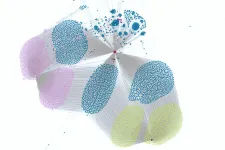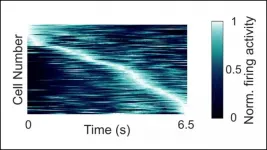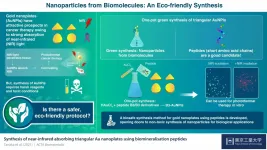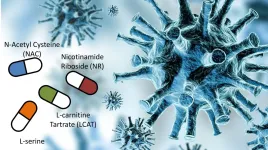Patients with high-deductible insurance plans less likely to seek care for chest pain
Study suggests plans particularly affect low-income patients, who had a 30% higher rate of heart attack hospitalization within 30 days after their initial emergency department visit diagnosis of chest pain
2021-06-28
(Press-News.org) Up to 7 million people each year receive care in an emergency department (ED) for chest pain, a symptom of a potential heart condition. Over 80 percent of chest pain patients, however, ultimately have no evidence of cardiovascular disease or acute coronary syndrome. To disincentivize patients from over-utilizing costly care, insurers and employers are increasingly opting for high-deductible health plans (HDHPs) that require significant out-of-pocket spending before coverage begins. Researchers from Brigham and Women's Hospital and Harvard Pilgrim Health Care Institute investigated whether switching to an HDHP influenced the frequency of ED visits and hospitalizations for chest pain. Their findings, published in Circulation, report a 4.3 percent decrease in ED visits for chest pain and an 11.3 percent decrease in visits that led to inpatient hospitalization based on the initial ED evaluation. Low-income patients were particularly less likely to visit the ED for chest pain and subsequently more likely to be hospitalized with a serious heart condition.
"Our research, along with past studies, has shown that lower-income patients disproportionately suffer from delays in care and worse clinical outcomes," said corresponding author Shih-Chuan Chou, MD, MPH, SM, of the Department of Emergency Medicine at the Brigham. "Low-income patients need the most attention if employers or insurers are to expand the use of high-deductible plans."
In their study, the researchers used a national medical insurer database to identify more than a half a million patients aged 19-63 whose employers offered only low-deductible health plans (requiring less than $500/year of out-of-pocket spending) before mandating enrollment in an HDHP (greater than $1,000/year) the next year. A control group of nearly 6 million employees included those enrolled in a low-deductible health plan for two straight years.
The researchers did not observe significant differences in cardiac testing after ED admission between low- and high-deductible groups. However, HDHP patients living in neighborhoods with higher poverty rates had a 29.4 percent higher rate of heart attack hospitalization 30 days after their initial ED diagnosis of chest pain, compared to those with addresses in other neighborhoods.
"At the clinician level, our research certainly demonstrates that it is quite important for clinicians to be aware of patients' out-of-pocket costs, as high burdens may indicate that a patient has likely deferred care and may suffer worse outcomes," Chou said.
With 57 percent of U.S. employees enrolled in HDHPs for single coverage in 2020, the researchers emphasize that when evaluating ED patients with chest pain, particularly low-income patients with HDHPs, clinicians should account for possible delays in care preceding the patients' presentation. Going forward, the researchers hope to examine whether HDHPs are associated with patient outcomes for significant medical emergencies, such as heart attack, while also exploring on a deeper level how out-of-pocket spending influences patient-clinician interactions and discussions about testing or treatment.
"Potential solutions may be to ameliorate financial burden by funding health savings accounts, or to keep out-of-pocket costs proportional to patients' incomes," said Chou.
INFORMATION:
There was no external funding for this work.
Paper cited: Chou, SC et al., "The Impact of High-Deductible Health Plans on Emergency Department Patients with Non-Specific Chest Pain and Their Subsequent Care" Circulation DOI: https://doi.org/10.1161/CIRCULATIONAHA.120.052501
ELSE PRESS RELEASES FROM THIS DATE:
2021-06-28
The internet is full of dangers: Sensitive data can be leaked, malicious websites can allow hackers to access private computers. The Security & Privacy Research Unit at TU Wien in collaboration with Ca' Foscari University has now uncovered a new important security vulnerability that has been overlooked so far. Large websites often have many subdomains - for example, "sub.example.com" could be a subdomain of the website "example.com". With certain tricks, it is possible to take control of such subdomains. And if that happens, new security holes open up that also ...
2021-06-28
The exoplanet satellite hunter CHEOPS of the European Space Agency (ESA), in which the Instituto de Astrofísica de Canarias (IAC) is participating along with other European institutions, has unexpectedly detected a third planet passing in front of its star while it was exploring two previously known planets around the same star. This transit, according to researchers, will reveal exciting details about a strange planet "without a known equivalent".
The discovery is one of the first results of CHEOPS (CHaracterising ExOPlanet Satellite) and the first time that an exoplanet has been seen with a period longer than 100 days transiting a star which is sufficiently ...
2021-06-28
Scientists of Tomsk Polytechnic University were able to obtain polytetrafluoroethylene (PTFE) membranes using electrospinning. PTFE is known to be the most stable existent polymer. According to the scientists, it is a simple, affordable and easily scalable method, which will allow obtaining chemically stable membranes in industrial-scale production. The membranes can be used in petrochemical, aerospace, nuclear industries, carbon-free energy and medicine.
The latest results of the research of physical and chemical properties and biocompatibility of the obtained membranes are published ...
2021-06-28
The U.S. Food and Drug Administration's controversial decision to approve aducanumab for the treatment of Alzheimer's disease raises at least three major ethical issues that need to be addressed, states a new article in the Hastings Center Report:
Billions of dollars in Medicare resources (which is to say, taxpayer dollars) are at risk of being unjustly squandered.
Physicians must choose between facilitating this unjust squandering and denying desperate patients and families access to this drug.
Patients and families are having false hopes legitimated and encouraged when physicians prescribe aducanumab.
The drug's approval was contrary to the nearly unanimous judgment of an FDA advisory committee that there was little reliable evidence of significant ...
2021-06-28
HOUSTON - (June 28, 2021) - Rice University computer scientists are sending RAMBO to rescue genomic researchers who sometimes wait days or weeks for search results from enormous DNA databases.
DNA sequencing is so popular, genomic datasets are doubling in size every two years, and the tools to search the data haven't kept pace. Researchers who compare DNA across genomes or study the evolution of organisms like the virus that causes COVID-19 often wait weeks for software to index large, "metagenomic" databases, which get bigger every month and are now measured in petabytes.
RAMBO, which is short for "repeated and merged bloom filter," is a new method that can cut indexing times for such ...
2021-06-28
Neurons in the hippocampus fire during specific moments in time, according to research recently published in JNeurosci. The cells may contribute to memory by encoding information about the time and order of events.
Episodic memories involve remembering the "what, where, and when" of past experiences. The "where" may be encoded by place cells in the hippocampus, which fire in response to specific locations. Rodents have hippocampal neurons that fire in response to specific moments in time -- the "when" -- but until recently it was not known if the human brain contained them too.
Reddy et al. recorded the electrical activity of neurons in the hippocampus of epilepsy patients undergoing diagnostic invasive monitoring ...
2021-06-28
In cancer therapy, the effectiveness of an approach is determined by its ability to preserve the non-cancerous cells. Simply put, the higher the collateral damage, the greater are the side-effects of a therapy. An ideal situation is where only the cancer cells can be targeted and destroyed. In this regard, photothermal therapy--an approach in which cancer cells infused with gold nanoparticles can be heated up and destroyed using near-infrared (NIR) light that is strongly absorbed by the gold nanoparticles--has emerged as a promising strategy due to its minimally invasive nature.
"Because NIR light is able to penetrate biological tissues, it can illuminate ...
2021-06-28
The Structural Bioinformatics and Network Biology laboratory, led by ICREA Researcher Dr. Patrick Aloy, has completed the bioactivity information for a million molecules using deep machine-learning computational models. It has also disclosed a tool to predict the biological activity of any molecule, even when no experimental data are available.
This new methodology is based on the Chemical Checker, the largest database of bioactivity profiles for pseudo pharmaceuticals to date, developed by the same laboratory and published in 2020. The Chemical Checker collects information from 25 spaces of bioactivity for each molecule. These spaces are linked to the chemical structure of the molecule, the targets with which it interacts or the changes ...
2021-06-28
For the first time, scientists from the German Cancer Consortium (DKTK) partner site in Essen/Düsseldorf have discovered stem cells of the hematopoietic system in glioblastomas, the most aggressive form of brain tumor. These hematopoietic stem cells promote division of the cancer cells and at the same time suppress the immune response against the tumor. This surprising discovery might open up new possibilities for developing more effective immunotherapies against these malignant brain tumors.
The DKTK is a consortium centered around the German Cancer Research Center (DKFZ) in Heidelberg, which has long-term collaborative partnerships with specialist oncological centers at universities across Germany.
Glioblastomas ...
2021-06-28
Metabolic activators were found to reduce recovery time by as many as 3.5 days in patients with mild-to-moderate Covid-19, according to a Swedish-British study published today in Advanced Science.
The researchers also found that treatment with the metabolic activators improved liver health and decreased the levels of inflammation, as shown by inflammatory markers.
Conducted by researchers at Science for Life Laboratory at KTH Royal Institute of Technology in Stockholm, in collaboration with the Sahlgrenska Academy in Gothenburg and King's College, London, the ...
LAST 30 PRESS RELEASES:
[Press-News.org] Patients with high-deductible insurance plans less likely to seek care for chest pain
Study suggests plans particularly affect low-income patients, who had a 30% higher rate of heart attack hospitalization within 30 days after their initial emergency department visit diagnosis of chest pain





